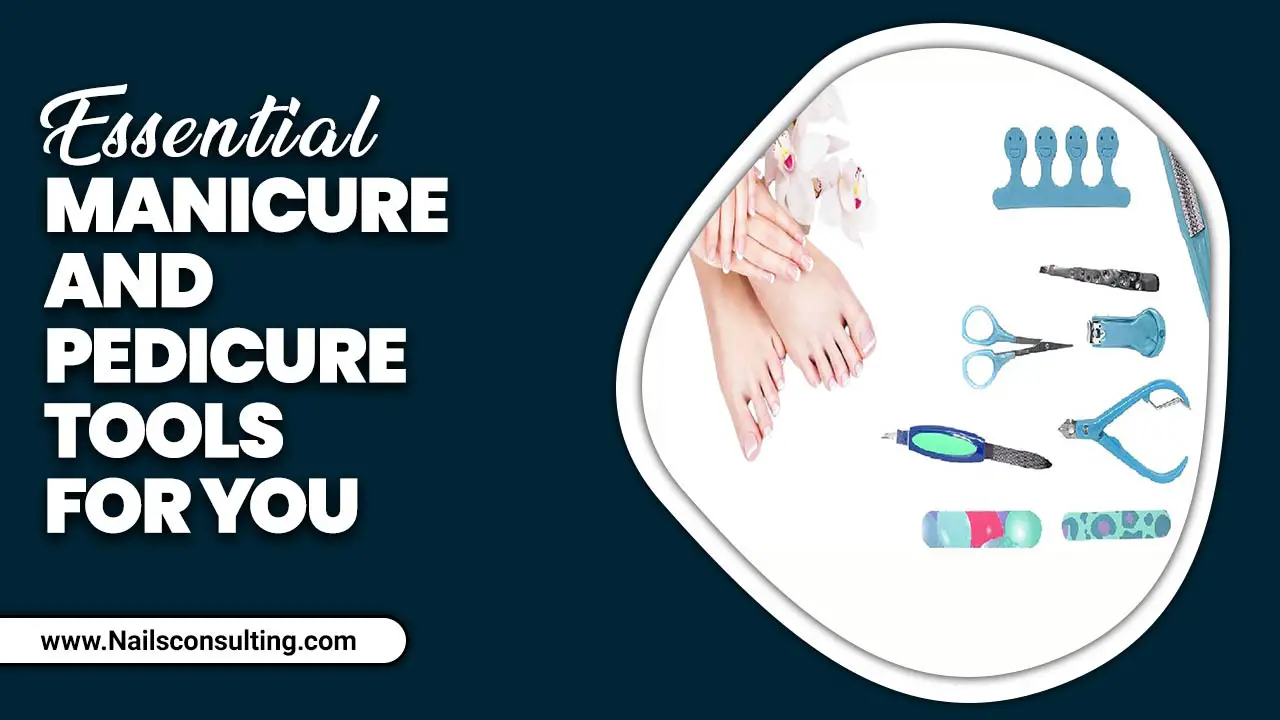Create a stunning watermelon ombre nail design with this easy-to-follow guide! Perfect for beginners, this tutorial breaks down the fruity trend into simple steps using essential tools for a vibrant, summer-ready manicure.
Dreaming of breezy summer vibes on your fingertips? The watermelon ombre nail design is your ticket to a fun, refreshing look that’s surprisingly easy to achieve, even if you’re new to nail art. Forget complicated techniques; we’re focusing on simple steps to get that perfect juicy gradient. You’ll be channeling pure sunshine and sweetness in no time! This guide will walk you through everything you need to know to create your own show-stopping watermelon nails. Ready to dive into this delicious design?
Why You’ll Love a Watermelon Ombre Nail Design
This playful design instantly brings a burst of summer fun to your style. It’s bright, cheerful, and instantly mood-lifting. Plus, the watermelon ombre effect is super trendy, making your nails a vibrant accessory. The good news? It doesn’t require advanced skills. With a few basic nail polish colors and simple tools, you can create a professional-looking manicure right at home. It’s a fantastic way to experiment with color and gradients without pressure. Get ready to feel like you’re holding a slice of summer, no matter the season!
Essential Tools and Materials for Your Watermelon Ombre Nails
Gathering the right supplies is the first step to nail art success! Don’t worry, you likely have most of these items already. For a perfect watermelon ombre, you’ll need:
- Base Coat: To protect your natural nails and help the polish adhere.
- Top Coat: To seal your design and add shine.
- Nail Polish Colors:
- A light pink or rosy nude for the base of your watermelon “flesh.”
- A bright pink or hot pink for the vibrant watermelon shade.
- A light green or mint green for the rind.
- A darker green or forest green for accentuating the rind.
- A sheer white or very light pink/peach for blending.
- Black or dark brown nail polish (optional, for tiny seeds).
- Cosmetic Sponges: Makeup sponges work perfectly for creating the ombre effect. Cut them into small pieces.
- Small Nail Art Brush or Toothpick: For any fine details or cleanup.
- Cleanup Brush or Cotton Swabs: For tidying up polish mistakes around your cuticles. You can use a small brush dipped in nail polish remover for precision.
- Nail Polish Remover: For cleaning up any stray polish.
- Small Dish or Palette: To mix and apply polish onto the sponge.
Choosing the Perfect Polish Palette
The colors you choose will really make your watermelon design pop! For the classic watermelon look, think vibrant and juicy.
- Watermelon Flesh: A bright, pure pink or a slightly warmer coral-pink will give you that sweet fruit vibe.
- Watermelon Rind: A gradient from a light, creamy green to a deeper, darker green works beautifully. You can even mix a tiny bit of white into your light green to get a pastel, softer shade.
- Blending Shade: A sheer white polish is your secret weapon for smoothing out the ombre transition. It allows the colors to meld together naturally without looking streaky.
Don’t be afraid to experiment! If you prefer a softer watermelon, opt for more pastel shades. For a bold statement, go for neons or electric pinks. The beauty of DIY nail art is its customizability!
Step-by-Step: Creating Your Watermelon Ombre Masterpiece
Let’s get painting! Follow these simple steps for a foolproof watermelon ombre design. Remember, practice makes perfect, so have fun with it!
Step 1: Prep Your Nails
Start with clean, dry nails. Gently push back your cuticles using a cuticle pusher. If you have any old polish on, remove it completely. For a smooth canvas, lightly buff your nails with a fine-grit nail file. This helps your base coat and polish adhere better. Apply a thin layer of your chosen base coat and let it dry completely. This step is crucial for preventing staining and ensuring your manicure lasts longer.
Step 2: Apply the Base Color (Watermelon Flesh)
For the main “flesh” of your watermelon, apply one or two thin coats of your light pink or rosy nude polish. Make sure each coat is fully dry before moving to the next. This creates a smooth base for your ombre effect. If you’re aiming for a very pale, almost white inner rind, you might use a very pale pink or even off-white here, but the classic look uses a flesh tone.
Step 3: Prepare for the Ombre
Cut your cosmetic sponge into 2-3 small pieces. You want pieces that are easy to handle and fit comfortably on your nail. On a piece of foil or a palette, create stripes of your bright pink and your blending white polish, side-by-side. You can also add a stripe of your light green polish next to the pink if you want to blend the colors directly on the sponge. For a cleaner gradient, we’ll focus on the pink ombre first, then add the green rind.
Step 4: Create the Pink Ombre
Dab the sponge gently into the stripes of pink and white polish on your palette. Don’t saturate the sponge; just get enough color to transfer. Now, gently dab the sponge onto your nail, starting from the tip and working your way down towards the cuticle. You should see the colors start to blend, creating a gradient effect. Re-apply polish to the sponge as needed and continue dabbing until you achieve your desired gradient. You want the pink to be more intense at the tip and fade down towards the cuticle, where the white or base color shows through. Some people prefer the ombre to go from cuticle to tip, so choose what looks best to you!
Pro Tip: For a smoother blend, it helps to let the polish on the sponge dry slightly before dabbing onto the nail, or to apply the colors in very thin layers. You can also apply a coat of clear polish on your nail before sponging to give you a little more playtime for blending without the polish drying too fast.
Step 5: Add the Green Rind
Now, let’s create that distinct watermelon rind. On a clean part of your palette, put down a stripe of light green and a stripe of dark green, right next to each other. Take a fresh, clean piece of your sponge (or a different section of the same one) and dab it into these green stripes. Gently dab this green sponge onto the base of your nail plate, just above the cuticle. You want to transition from the darker green at the very edge of the nail to the lighter green as it meets your pink ombre. This creates an authentic rind look. Think of it as a mini-gradient at the very bottom of your nail.
Alternatively, for a simpler rind: apply a clean line of light green polish just above your cuticle with a small brush. Once dry, carefully apply a darker green polish over the very edge of the light green line to create definition. This method is less “ombre” but still effective for a watermelon design.
Important Note on Sponging: The sponging technique works best when applied in light, tapping motions. Pushing the sponge will smear the colors. Aim for a gentle stippling effect. You might need to re-load the sponge with polish multiple times to build up the color and blend evenly.
Step 6: Clean Around the Cuticles
This is where cleanup is key! Once the polish is mostly dry, use a small brush dipped in nail polish remover (or a specialized cleanup brush) to carefully remove any excess polish from your skin and cuticles. This will make your design look neat and professional. A steady hand is all you need! If you don’t have a special brush, a regular small makeup brush or even a pointed cotton swab can work wonders with a bit of patience.
Step 7: Add Watermelon Seeds (Optional)
For an extra touch of realism, you can add tiny black seeds! Once the polish is completely dry, use a tiny nail art brush or the tip of a toothpick dipped in black or dark brown polish. Make small dots or short dashes scattered across the pink ombre section of your nails. Keep them small and not too uniform to look natural. Don’t go overboard; a few strategically placed “seeds” are all that’s needed.
Step 8: Apply Top Coat
Once all the polish and any optional details are completely dry, apply a generous layer of your favorite clear top coat over your entire nail. This seals in the design, adds a beautiful glossy finish, and protects your manicure from chipping. Make sure to cap the free edge of your nail by running the brush along the tip – this trick helps prevent chipping and peeling.
Watermelon Ombre Nail Design Variations
The watermelon theme is versatile! Here are some fun ways to switch up your watermelon ombre:
- Reverse Ombre: Have the brightest pink at the cuticle and fade to white/lighter pink towards the tip.
- Diagonal Ombre: Apply the ombre effect from one corner of the nail to the opposite.
- French Tip Watermelon: Keep the base of your nail natural or a sheer pink, and create a watermelon-colored French tip.
- Matte Finish: Swap your glossy top coat for a matte one for a sophisticated, velvety look.
- Glitter Accents: Add a touch of glitter to the pink ombre section for extra sparkle.
Maintaining Your Watermelon Ombre Nails
To keep your summer-inspired nails looking fresh, follow these simple tips:
- Wear Gloves: When doing chores like washing dishes or cleaning, wear rubber gloves to protect your polish from harsh chemicals and excessive moisture.
- Moisturize: Keep your nails and cuticles hydrated with cuticle oil or hand cream. Dryness can lead to chips and cracks.
- Touch-Ups: If you notice a small chip, you can try to fix it with a bit of clear polish or the original colors.
- Avoid Using Nails as Tools: Resist the urge to use your nails to scrape or pry things open. They are for decoration, not demolition!
Troubleshooting Common Ombre Nail Issues
Even the best nail artists encounter a few hiccups! Here’s how to fix common problems:
- Streaky Gradient: This often happens if the colors dry too quickly on the sponge or if not enough polish is used. Try applying another sheer coat of your blending color over the streaky area, or re-do the sponging step with a slightly different pressure or color saturation.
- Harsh Lines: If the transition between colors looks too abrupt, use a clean sponge piece with just a tiny bit of the blending white polish to gently tap over the lines. This can help soften them.
- Chunky Polish: Old, thick polish can create an uneven finish. Thin out your polishes with a nail polish thinner (not remover!) or replace them if they’re too old.
- Messy Cuticles: Don’t worry! A good cleanup brush with nail polish remover is your best friend. Take your time to carefully remove any color that got onto your skin.
Persistent streaks might also be a sign that your sponge is too dry or too saturated. Experiment with dabbing the sponge onto a piece of paper towel first to remove excess polish before touching your nail.
The Science of Nail Polish and Color Theory for Your Design
Understanding a little bit about how nail polish works and basic color theory can elevate your nail art. Nail polish typically consists of pigments, binders, and solvents. When the solvent evaporates, it leaves behind the pigments and binders, forming a hard, glossy film. Ombre, or gradient, effects rely on the smooth transition of colors. This is why blending shades, often with a sheer intermediary color like white or a clear polish, is key to a seamless look.
For the watermelon effect, we’re using complementary and analogous colors. The pinks and reds (the “flesh”) are warm and vibrant. The greens (the “rind”) are also warm but provide a beautiful contrast. When placed next to each other, they make each other pop, just like a real watermelon.
If you’re interested in how pigments react with light for your colors, learning about spectral colors can be fascinating. For instance, the vibrant pinks we use reflect red and blue light wavelengths, while the greens reflect green wavelengths. This interaction is what the human eye perceives as color!
For more on the pigments and polymers used in nail products, you can explore resources from bodies like the U.S. Food and Drug Administration (FDA), which regulates cosmetic ingredients.
Watermelon Ombre Nail Design: Pros and Cons
Like any trend, the watermelon ombre has its upsides and potential downsides. Knowing these can help you decide if it’s the right design for you!
| Pros | Cons |
|---|---|
| Playful & Fun: Instantly adds a cheerful, summery vibe to your look. | Potential Mess: The sponging technique can be messy if not done carefully, requiring thorough cleanup. |
| Beginner-Friendly: Achievable for those new to nail art with simple tools like sponges. | Can Be Time-Consuming: Drying times between coats and careful cleanup can add to the overall manicure duration. |
| Trendy: A popular and stylish design that’s perfect for seasons or specific events. | Requires Specific Colors: You need a good range of pinks and greens to achieve an authentic watermelon look. |
| Customizable: Easily adaptable with different shades, finishes (matte/glossy), and added elements. | Longevity Can Vary: Like any manicure, longevity depends on nail care habits and the quality of products used. |
| Affordable: Can be done at home, saving money compared to salon manicures. | Can Stain Nails: Bright colors, especially red and pink, can potentially stain nails if a good base coat isn’t used. |
Frequently Asked Questions (FAQ) About Watermelon Ombre Nails
Got questions? We’ve rounded up some common ones beginner nail art enthusiasts ask!
Q1: Can I achieve an ombre without a sponge?
Yes! You can use a small brush to stipple colors together on the nail, or even use a thin layer of clear polish to blend colors applied directly to the nail. A makeup sponge is often the easiest and most effective tool for beginners, though!
Q2: How many coats of polish should I use for the ombre?
For the base color, two thin coats are usually sufficient for opacity. For the ombre itself, you’ll be dabbing the sponge multiple times. It’s more about building up the color and blend gradually rather than applying thick coats. You might end up with 2-3 thin layers deposited by the sponge to get the desired intensity and gradient.
Q3: My ombre looks patchy. What am I doing wrong?
Patchiness is usually due to uneven pressure when sponging, or the polish drying too fast on the sponge. Try applying a fresh coat of polish to the sponge each time you dab. Ensure you’re dabbing gently and consistently. If the colors look too separated, try dabbing a clean sponge with just a tiny bit of blending white polish over the entire gradient to smooth out the transition further.
Q4: How long does a watermelon ombre nail design typically last?
With proper application, including a good base and top coat, and careful maintenance, a watermelon ombre can last anywhere from 5 to 10 days. Longevity depends on your nail care routine and how hard you are on your hands.



